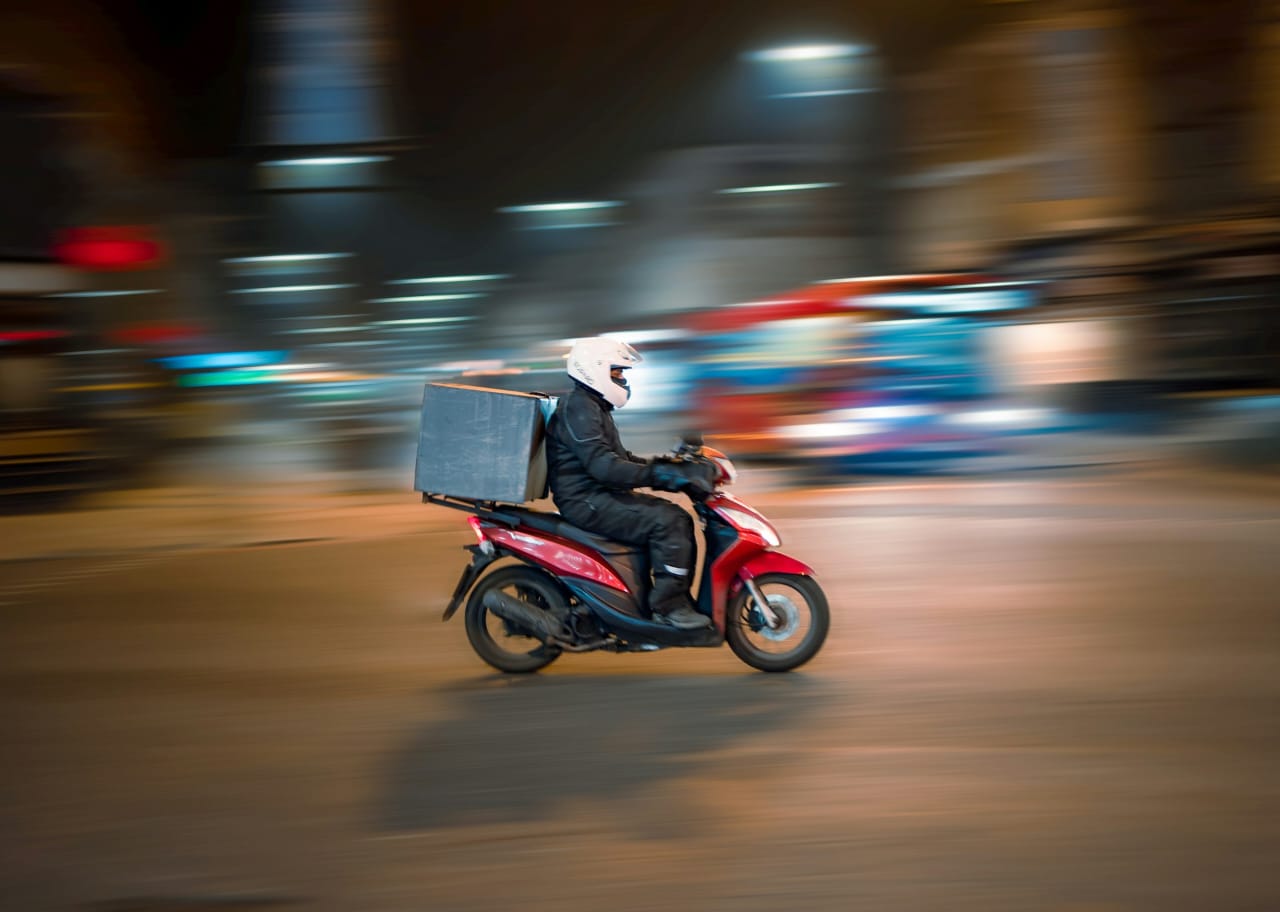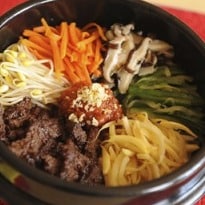This Korean dish is a one-bowl wonder and the perfect thing to warm you up as the cold weather hits
My bones can feel the cold weather coming and I have a caveman's urge to get close to fire and fill my belly. There's only one thing for it: bibimbap. This Korean dish is the champion of comfort foods. Try saying it aloud. Bi-bim-bap. Even the sound of the word is satisfying. I grab my coat and head for ... erm ... Surrey (but we'll get to that later).
The basics
Let's start with the linguistics: bibim means "mixed" and bap means "rice". Basically, it's a one-bowl wonder of steamed rice, sautéed vegetables and a fried egg, all mixed up together. In the Korean household, it's a traditional way of using up day-old rice and leftovers, so if you're lucky there might be a bit of barbecued beef or tofu thrown in too. It's served cold in the summer, hot in the winter, but always with a side serving of gochujang - a thick, shiny, deep red chilli paste - to add perkiness.
But I'm not after any old bibimbap. My needs are more specific than that. What I want is a dolsot bibimbap: the one that comes in a blisteringly hot stone pot (a dolsot), with a raw egg on top, and arrives at the table with a head-turning sizzle - all surprisingly attention-seeking for such a homely dish.
The construction
It's considered important to have at least five different colour toppings on the rice, for nutrition and aesthetics. These could be just about any vegetable you can think of but typical toppings are shiitake mushrooms, shredded cucumber, julienned carrots, sliced courgette, bean sprouts, dried seaweed and daikon radish. The raw egg adds a final boost of colour and sunshine.
But the pivotal thing - the thing that makes the magic happen - takes place before anything goes in the pot at all: The dolsot is coated with sesame oil and heated on the stove so that the rice continues to cook and crackle invitingly after it has been brought to the table.
How to eat it
You don't just dive in. Oh no. It's more interactive than that. First, let it sit for a minute or two to let the rice crisp up nicely against the sides of the pot. Then plonk on as much or as little of the chilli paste as you like. Even if you use the whole lot, it'll only be mild-to-moderately spicy. Now take your spoon - this dish is way too hearty to eat with chopsticks - plunge it in and give the whole thing a really good mix.The broken egg will cook as it is dispersed through the rice and the chilli paste will turn everything a warm, orangey colour. OK, now you can eat.
Where to eat it
Really, you won't do better than New Malden, Surrey, that leafy little pocket of suburban England that has become a slice of other-side-of-the-world culture. The Korean community here dates back to the 50s and today there are thought to be as many as 20,000 Korean residents.
Within seconds of arriving in New Malden, I'm in a cosy restaurant called Yami among the clinking of stainless steel chopsticks - favoured in Korea over wooden or plastic ones - with my hands warming around a complimentary cup of barley tea. Bibimbap is only a fiver here and includes side dishes of kimchi, a clear noodle and beansprout salad, a green salad with a mayonnaise and gochujang dressing and a bowl of cabbage soup.
The whole experience
Bibimbap never comes in a size smaller than huge, which is good, because the real pleasure of it isn't in the first mouthfuls. It's in the way the warmth and flavours draw you in, deeper and deeper. The more I eat, the better it seems to get. And then I hit gold: the crusty-crunchy bits of baked-on rice at the bottom - the equivalent of those curled up, crispy, browned bits of pasta you get at the corner of a home-made lasagne.
What's more it feels as if it's good for me. Koreans believe it heals the body, releases energy and keeps illness away through the winter. "We say it's 'Everything in a spoon!'" says Yung Hee Byun, a student at the table next to me. As I step outside, I feel happy and warm from the inside out. If Ready Brek is central heating for kids, then bibimbap is central heating for grown-ups. I'm ready to face the wind head-on. But first I need a nap.
Where do you go when you feel the need for a bowl of bibimbap?
Photo: Bibimbap: 'Everything in a spoon!' Photograph: Colin Mcconnell/Toronto Star









